Abstract
Recent research suggests that the sound produced by a child's vocalization can become a conditioned reinforcer via the temporal pairing of an experimenter's vocal model with a preferred stimulus delivered to the child. The current study replicated and extended the findings of previous studies in this area. A multiple baseline design across vocal behaviors (combined with a reversal to baseline) was used to evaluate the effects of a stimulus—stimulus pairing procedure on one-syllable utterances of 3 boys who had been diagnosed with autism. Data were collected during presession and postsession observations across four conditions: baseline, control, pairing, and reversal. During baseline, the free-operant levels of target sounds were recorded in the absence of experimenter interaction. During the control condition, the experimenter presented a vocal model and, after a 20-s delay, presented a preferred stimulus to the child. During the pairing condition, the experimenter's vocal model was paired with the delivery of the preferred item. Results from postsession observations during the pairing condition showed an increase in target sounds for 2 participants. This outcome may suggest that the children's vocalizations were automatically reinforced, albeit only temporarily. Practical and theoretical implications of the results are discussed along with the specific methods employed in this literature.
Full text
PDF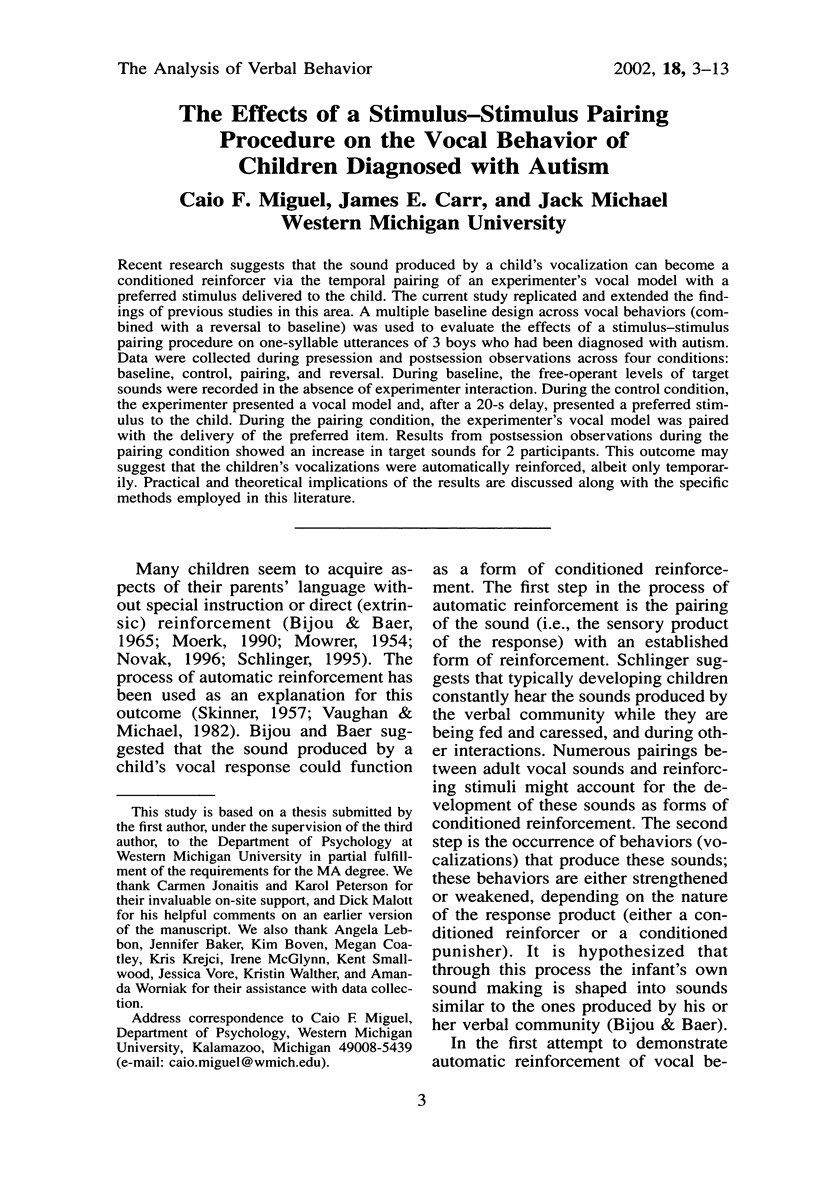
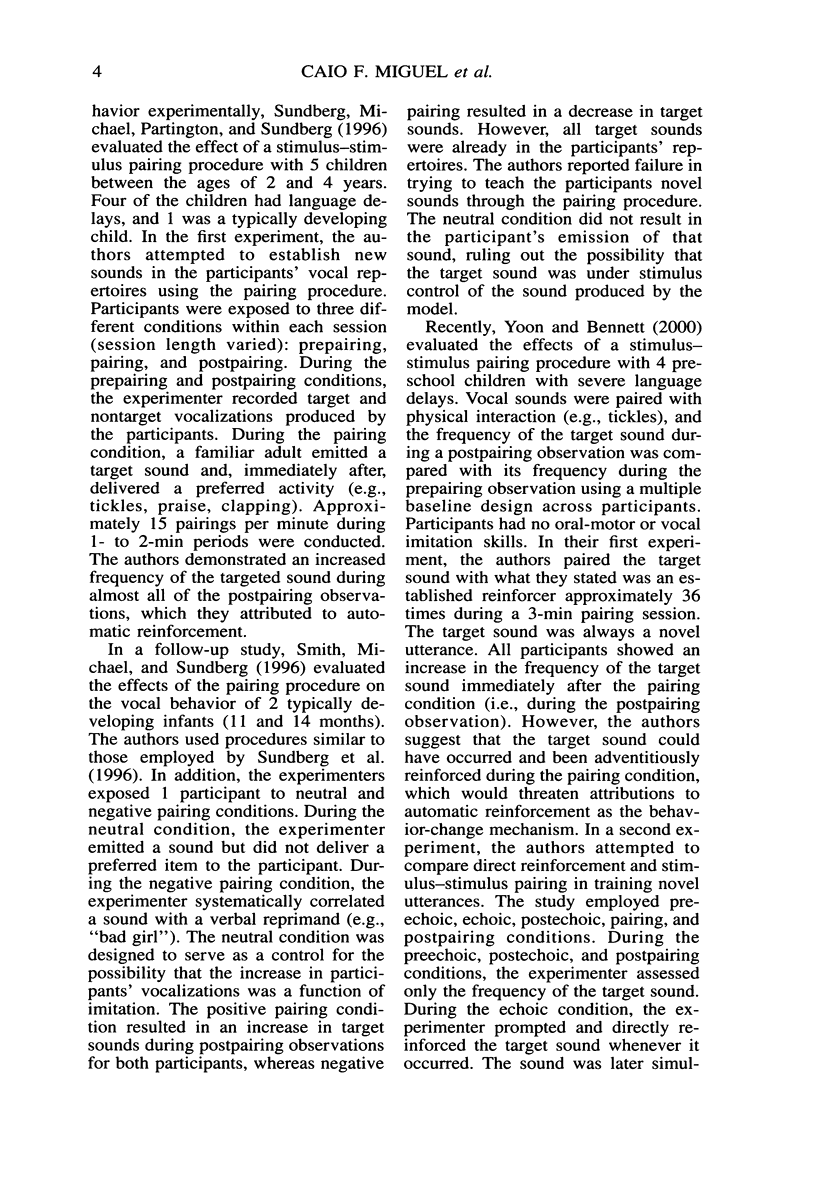
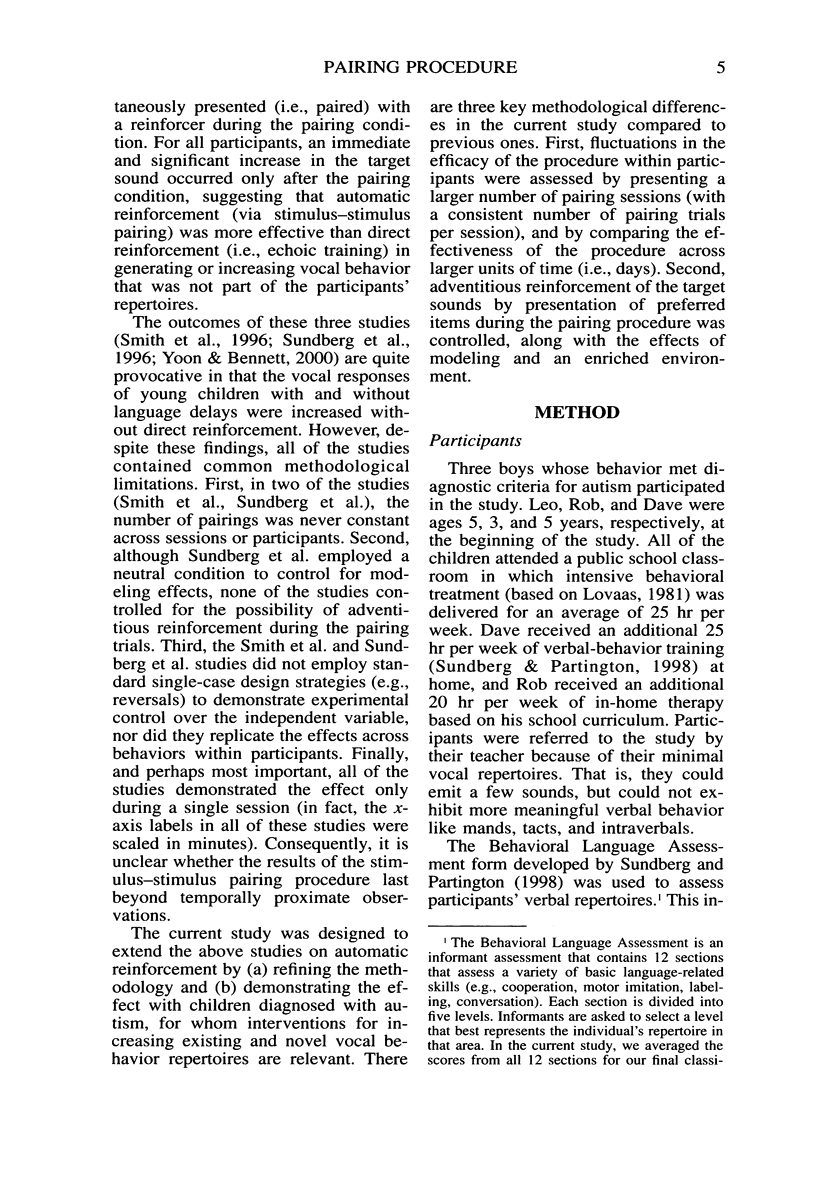
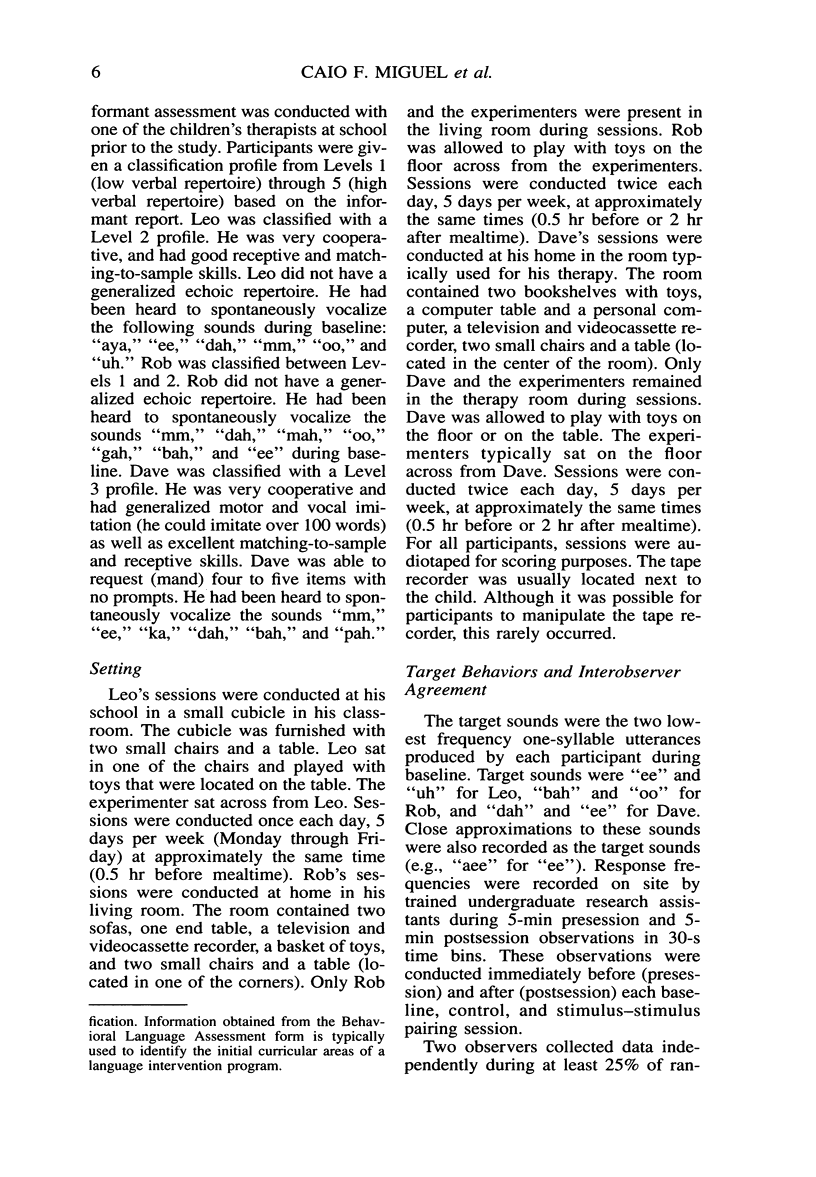
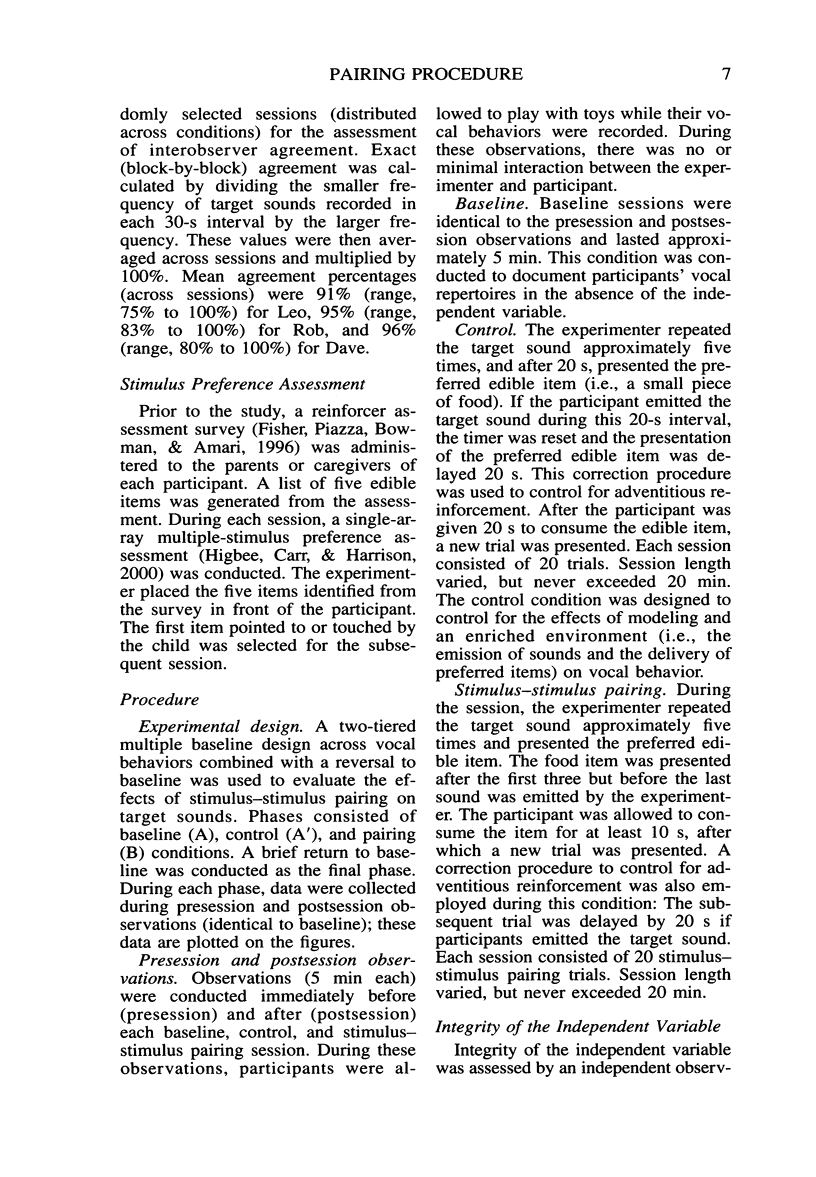


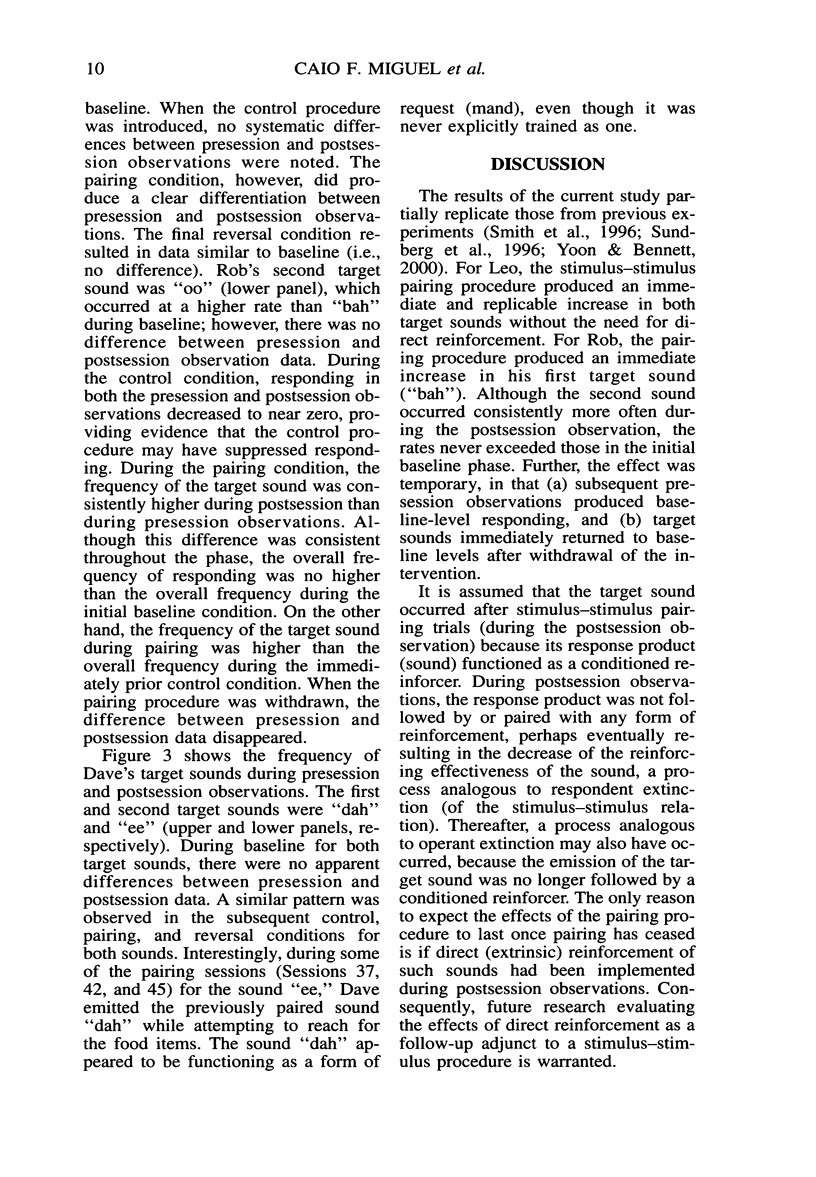
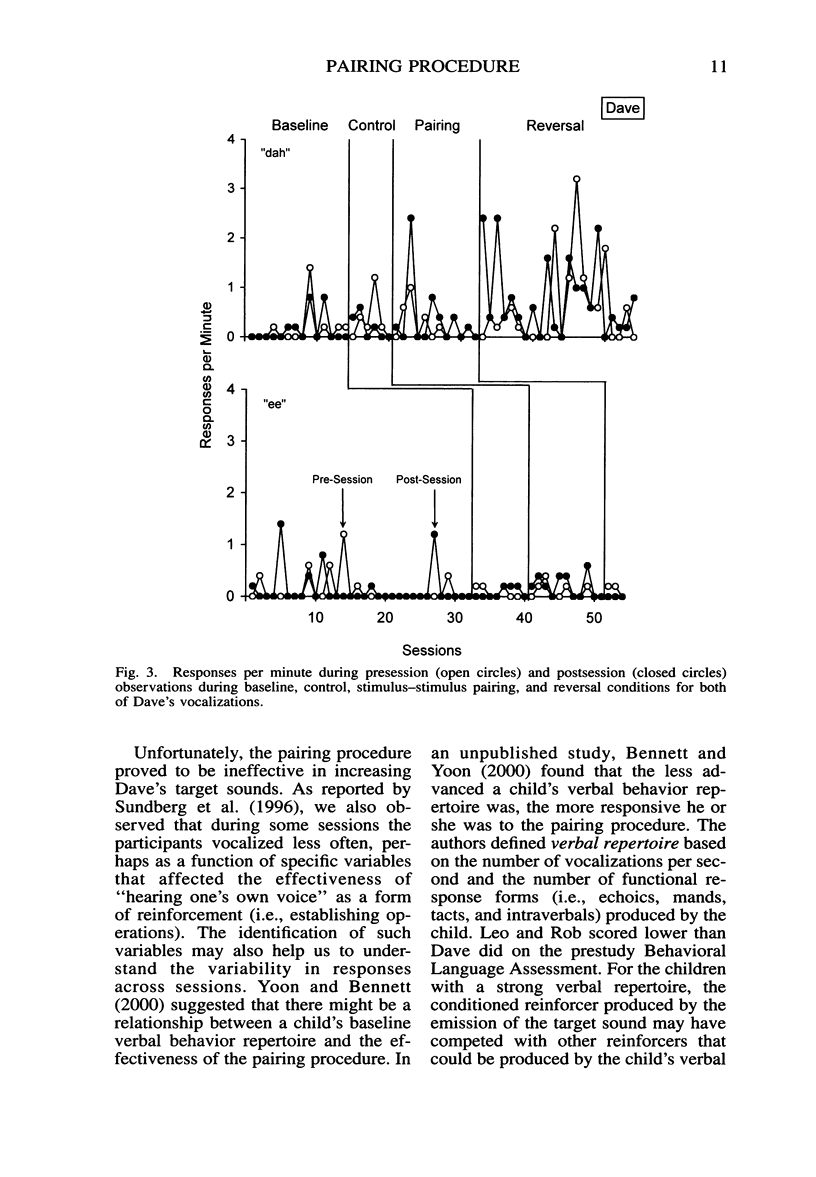
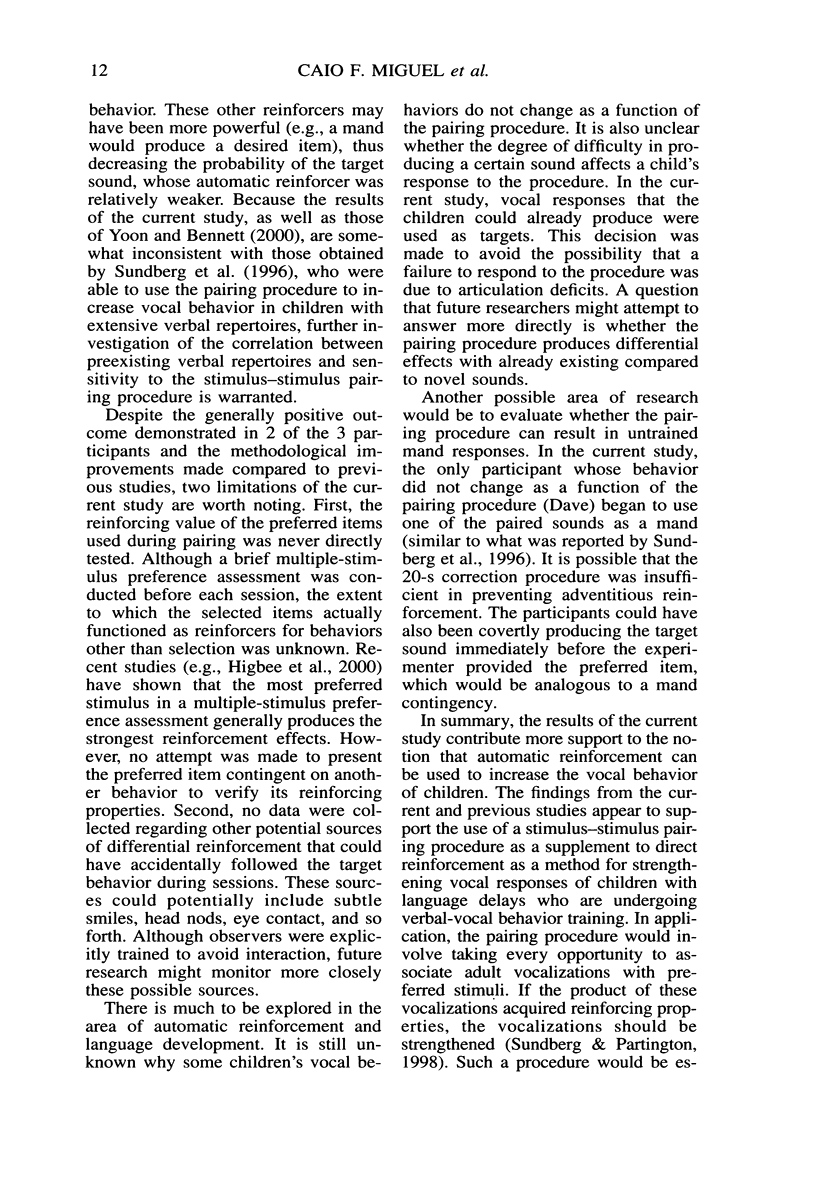

Selected References
These references are in PubMed. This may not be the complete list of references from this article.
- Andersson B. S., Vidal R. F., Sundberg M., Rajs J., Sótonyi P. Hydroperoxide-induced nucleotide degradation and adenosine formation in isolated rat cardiomyocytes. Toxicology. 1996 Jan 8;106(1-3):39–48. doi: 10.1016/0300-483x(95)03158-c. [DOI] [PubMed] [Google Scholar]
- Baer D. M., Wolf M. M., Risley T. R. Some current dimensions of applied behavior analysis. J Appl Behav Anal. 1968 Spring;1(1):91–97. doi: 10.1901/jaba.1968.1-91. [DOI] [PMC free article] [PubMed] [Google Scholar]
- Fisher W. W., Piazza C. C., Bowman L. G., Amari A. Integrating caregiver report with systematic choice assessment to enhance reinforcer identification. Am J Ment Retard. 1996 Jul;101(1):15–25. [PubMed] [Google Scholar]
- Higbee T. S., Carr J. E., Harrison C. D. Further evaluation of the multiple-stimulus preference assessment. Res Dev Disabil. 2000 Jan-Feb;21(1):61–73. doi: 10.1016/s0891-4222(99)00030-x. [DOI] [PubMed] [Google Scholar]
- Moerk E. L. Three-term contingency patterns in mother-child verbal interactions during first-language acquisition. J Exp Anal Behav. 1990 Nov;54(3):293–305. doi: 10.1901/jeab.1990.54-293. [DOI] [PMC free article] [PubMed] [Google Scholar]


